The special exhibition the Silks from the Silk Road: Origin, Transmission and Exchange was organized by the State Administration of Cultural Heritage and the Zhejiang Provincial People's Government, and hosted by China National Silk Museum, with more than 140 pieces/sets of objects on loan from 26 archaeological institutes and museums from nine provinces and autonomous regions including Zhejiang, Henan, Hennan, Hubei,Hunan, Shaanxi, Gansu, Qinghai and Xinjiang. Since the opening ceremony was held in the West Lake Museum on September 15, 2015, it has attracted a lot of attention and welcome from the professional academic circle of the Silk Road studies and local people. After collective explanation by the curatorial team in the National holiday in October and before its end on October 15, the exhibition ushers in another new climax. On October 11, two more important exhibits is added in the exhibition, i.e. two pattern loom models of the Han Dynasty unearthed from Laoguanshan in Chengdu for five days. At the same time,China National Silk Museum and Chengdu Museum jointly publish the research results on the reconstruction of the pattern loom of the Han Dynasty.
On October 12, the Silks from the Silk Road:Origin, Transmission and Exchange international symposium is held in the auditorium of the West Lake Museum, while 20 institutions along the Silk Road and institutions researching the Silk Road from all over the world announce the establishment of "IASSRT (International Association for Studyof Silk Road Textiles)".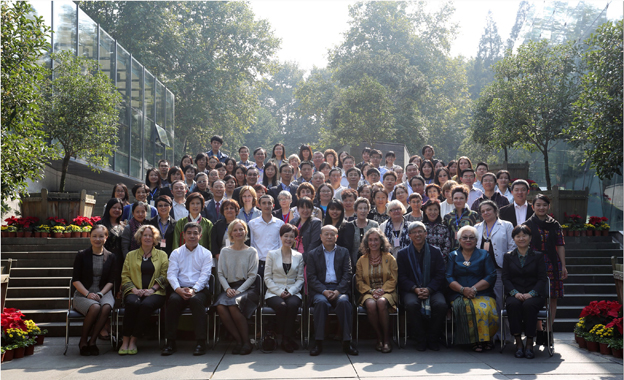
I. Studies of reconstruction of the pattern loom made in the Han dynasty excavated from Laoguanshan of Chengdu
From July 2012 to August 2013, Chengdu Institute of Archaeology and Jingzhou Cultural Heritage Conservation Center established a joint team to make rescueexcavations for the tombs of the Western Han Dynasty located in Laoguanshan,Tianhui Town, Chengdu. They sorted out total 4 tombs with earth pits and wooden coffins of the period from Emperor Jingdi (157 -141BC) to Emperor Wudi (141-88BC) in the early Han Dynasty. Among them the owner of the tomb 2 was named WanDinu. Four models of wooden pattern loom and some textile-related tools were unearthed from this tomb, which can be called a shocking discovery, so it was included in 2013 Top Ten Archaeological Discoveries in China.
The four pattern looms all were unearthed from the bottom cabinet in the north of tomb 2, made of bamboo and wood with the complicated structure and assembled exquisitely and accurately. On their warp beams there are remaining colored silk threads. Meanwhile, some relevant models of textile tools, such as warping, rewinding, weft winding tools, and 15 painted wooden figurines engaging in the textile production were also discovered together with the pattern looms. It could be deduced that those looms, tools and figurines reproduced the scene of production of the Shu Silk (Chengdu silk) in the Han Dynasty. Among the four looms, one is relatively bigger while the other three smaller. Technically, all the four ones are called the hook-shaft pattern loom (or the pattern loom with one hook and multi-shafts), weaving patterns with two foundation shafts and many pattern shafts. The foundation shafts are linked and driven by a pair of upper pulleys and a pair of lower treadles. The pattern shafts are fixed in a frame with grids, positioned by a beam with the ratchet on the top of the loom and select the shafts with a pair of pendent wooden hooks. The looms weave patterns through raising the pattern shafts by means of the treadles via the sliding frame or connecting rod. According to this set ofmodel, the number of pattern shafts should be about 10 to 20 pieces and the patterns woven by the loom are as same as the ones of the Warring States Period to the Han Dynasty, having short warps and long wefts. However, based on the unearthed silk patterns of the Warring States Period to the Han Dynasty, the quantity of pattern shafts should be larger than that in the looms. Such hook-shaft pattern looms could be classified into two categories based on their different transmission methods. The larger one should be called the sliding frame-type hook-shaft pattern loom and the other three smaller ones called the connecting rod-type hook-shaft pattern loom.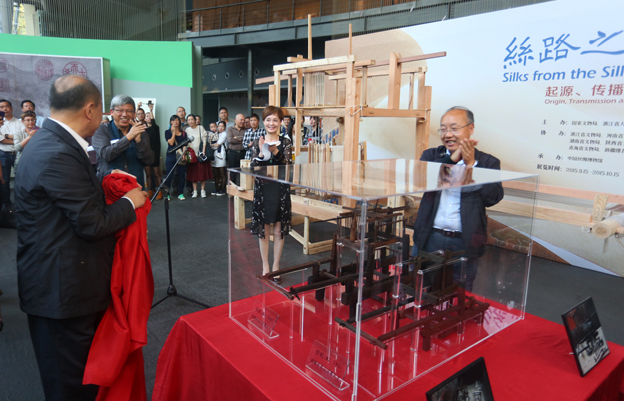
The basic operating principle of the pattern loom focuses on the repeated control of patterns weaving based on the pattern weaving rule stored in the shaft ofthe loom or in the shaft connected with the shaft hole, which is one of important issues in the Chinese and international textile and scientific and technological histories. Joseph Needham attributed the invention of the pattern loom to China and stated, the Chinese character “机” originated from the shape of the weaving loom and became the generic term for machinery and the antonomasia of wisdom, indicating the weaving loom takes an important place in the Chinese scientific and technological history. The core technology of a pattern loomlies in the programming of patterns, which didn’t only exert great influenceson the silk production in China and Europe but also had direct influences onthe invention of many modern technologies of the world, such as telegrams and computers.The model of pattern loom unearthed from the Laoguanshan Tombs of the Han Dynasty filled the void in the Chinese and even world scientific and technological histories, having the undoubtedly high academic value. Furthermore, such looms were once used to produce the Sichuan brocade in the Han and Tang dynasties and the Sichuan brocade was the important representative of Chinese silk products at that time. Thus, the weaving technology should have been spread together with the promotion of silk so it has great significance for the outbound spread of Chinese culture along the Silk Road. Apparently,such looms have made great contributions to the world textile culture and the human civilization.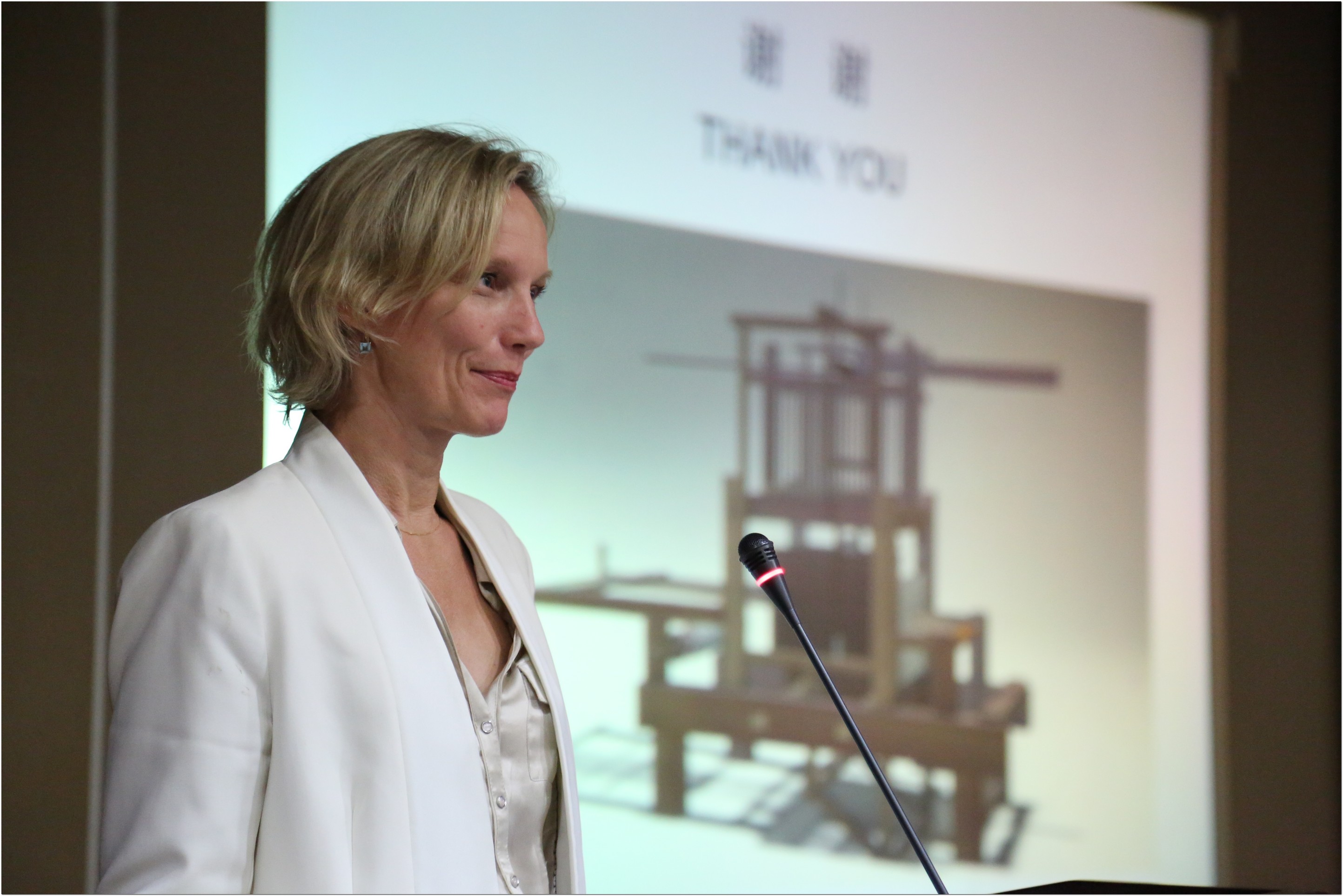
Based on such historic significance, in 2014, China National Silk Museum joined hands with Chengdu Museum, the Institute for the History of Natural Sciences, Chinese Academy of Sciences and Zhijiang College of Zhejiang University of Technology to jointly declare the specific research topic “Reconstruction, Research and Presentation of the Pattern Weaving Technology in the Han Dynasty – Taking the Looms Unearthed from the Laoguanshan Tombs of the Han Dynasty in Chengdu as an Example” under the “Compass Plan” of the State Administration of Cultural Heritage. This topic was targeted at studies of the model of the pattern loomand relevant cultural relics unearthed from the Laoguanshan Tombs of the Han Dynasty, fully and systemically sorted out and surveyed them, thoroughly studied and restored the structure of the pattern loom of the Han Dynasty and the pattern weaving technology then, and solved the academic arguments on the technology of the pattern loom of the Han Dynasty. Furthermore, based on research results, a three-dimensional presentation system was developed and a full-size operable prototype of the former larger pattern loom was reproduced too.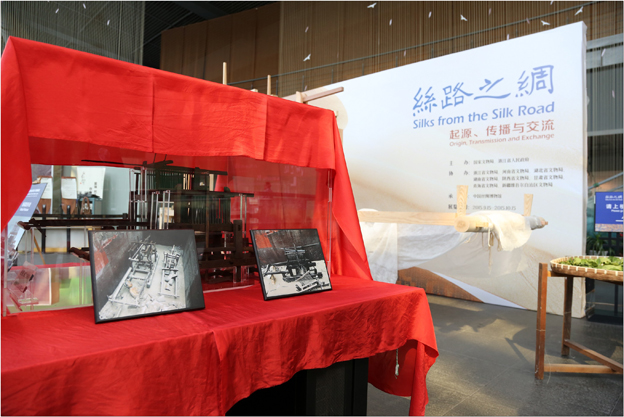
II. Silks from the Silk Road: Origin, Transmission and Exchange International Symposium
In the morning of October 12, 2015, Silks from the Silk Road: Origin, Transmission and Exchange International Symposium is held in the lecture hall of the West Lake Museum. It was hosted by China National Silk Museum, co-organized by Institute for the History of Natural Sciences of Chinese Academy of Sciences, Institute for the Ancient Chinese History of Peking University, Collaborative Innovation Center for the Cooperation and Development of the “Belt and Road” of the Zhejiang University,Needham Research Institute (NRI), UK, the Danish National Research Foundation’s Center for Textile Research, International Dunhuang Project, UK, and Korea National University of Culture Heritage, etc., and supported and assisted bythe Silk Road Holdings Group Co., Ltd.
The three-day conference is held to coordinate with Silks from the Silk Road: Origin, Transmission and Exchange Cultural Relics Exhibition in the West Lake Museum from September 15 to October 15, 2015. It makes in-depth discussion on the silk’s origin and transmission in China, and the communication between the Eastern and Western textile culture along the Silk Road, so as to further promote the research and protection of the silks from the Silk Road.
Tong Mingkang, the deputy director of the State Administration of Cultural Heritage and more than 120 Chinese and foreign representatives from 20 countries attended the opening ceremony. Kishore Rao, the director of World Heritage Centre of UNESCO, and Gustavo Araoz, the president of ICOMOS also sent congratulations for it. Tong Mingkang, the deputy director of the State Administration of Cultural Heritage, delivered a speech at the conference.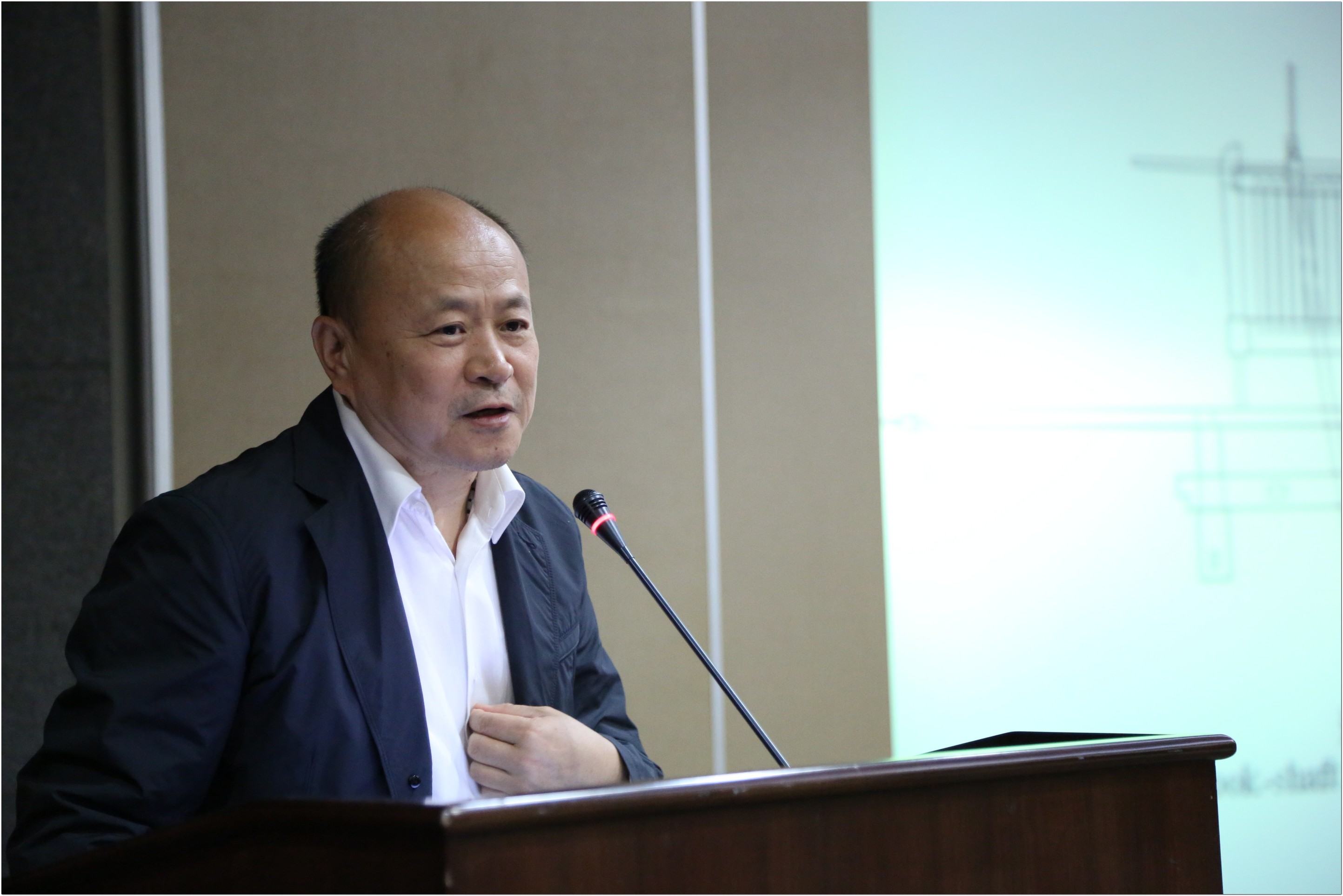
At the conference, nearly 40 experts on archaeology, linguistics, anthropology, ethnography, art history, nature history and other related fields from 20 countries and regions all over the world published and shared their latest research results in seven themes -- Silk Road and Cultural Communication, Archaeological Findings of Silk in China, Archaeological Findings of Silk: from the East to the North, Silks from the Silk Road: from Central Asia to West Asia, Silks in Linguistics on the Silk Road, the Maritime Silk Road and Foreign Trade of Silk,Ethnographic Silks on the Maritime Silk Road and Silks from the Silk Road after the Great Navigations.
After the conference, the delegates visits Linghu Silk Production Base of Huzhou Silk Road Group, Digang FAO Mulberry Fish Pond Protection Base, Tzeli Silk Museum and Silk Guild Nan-Xing in Nanxun ancient town, and some other places to examine the original place of sericulture silk and the "silk town" in the construction planning.
III. International Association for the Study of Silk Road Textiles
Another important part of the opening ceremony is the signing ceremony of founding the International Association for the Study of Silk Road Textiles (herein after referred to as "IASSRT"). The Association is an international association founded for the purpose to connect the research institutions along the Silk Road and other related institutions (including universities, museums,libraries, archaeological institutions, research institutions, and research groups, etc.) for the cooperation in collaborative researches and sharing resources. The 24 agencies as the founders for the first time include below:
International Dunhuang Project (IDP) (British Library)
Needham Research Institute (NRI), UK
Max Planck Institute for the History of Science (MPIWG), Gernany
University of Padova, Italy
The Danish National Research Foundation’s Center for Textile Research (CTR)
Israel Antiquities Authority
Nasledie,Ministry of Culture of Stavropol Region, Russia
Institute of Ancient History and Archaeology of the Northern Caucasus, Stavropol, Russia
Institute of Archeology of Academy of sciences of Republic of Uzbekistan
ASEANT traditional Textile Art Community Indonesia (ASEANTTAC)
Queen Silikit Textile Museum, Thailand
Korea National University of Culture Heritage
China National Silk Museum
Institute for the Ancient Chinese History of Peking University
Institute for the History of Natural Sciences of Chinese Academy of Sciences
Collaborative Innovation Center for the Cooperation and Development of the Belt and Road of the Zhejiang University
Fashion? Art Design Institute of Donghua University, China
Community of Chinese Museums along the Silk Road
Institute of Archaeology of Xinjiang, China
ICOMOS Xi'an International Conservation Centre, etc.
16 representatives attended the signing ceremony, including Susan Whitfield, the director of International Dunhuang Project (IDP) of British Library, Mei Jianjun, the director of Needham Research Institute (NRI), UK, Dagmar Schaefer,the director of Dep Ⅲ Artefacts, Knowledge and Action, Max Planck Institute for the History of Science (MPIWG),Germany, Marie-Louise Nosch, the director of the Danish National Research Foundation’s Center for Textile Research (CTR), Shen Yeonok, a professor at Korea National University of Culture Heritage, Orit Shamir, the director of the museum and exhibition department of Israel Antiquities Authority, Zhang Baichun,the director of Institute for the History of Natural Sciences of Chinese Academy of Sciences, Rong Xinjiang, the director of Institute for the Ancient Chinese History of Peking University, Cao Jinyan, representative of Collaborative Innovation Center for the Cooperation and Development of the Belt and Road of the Zhejiang University, Li Jun, the president of Fashion ? Art Design Institute of Donghua University, and Zhao Feng, the director of China National Silk Museum, etc.
The Association will be committed to the investigation into cultural heritage resources and database construction, the researches on key technologies for identification and protection, exchange of human resources and the establishment of cooperative laboratories, cooperative exhibitions related to Silk Roads textiles, and inheritance and innovation of traditional textile techniques, in order to promote the researches on the silks from the Silk Road in an all-round way. In the next five years, it is proposed to carry out a cooperative resource investigation along the Silk Road, and establish MSRS (Mapping Silk Road with Silk), GTT (Glossary of Textile Terminology on the Silk Road) and other specialized research projects to promote communication and cooperation among the association members and look forward to the participation of more research institutions and individuals.
 Pay attention to us
×
Pay attention to us
×